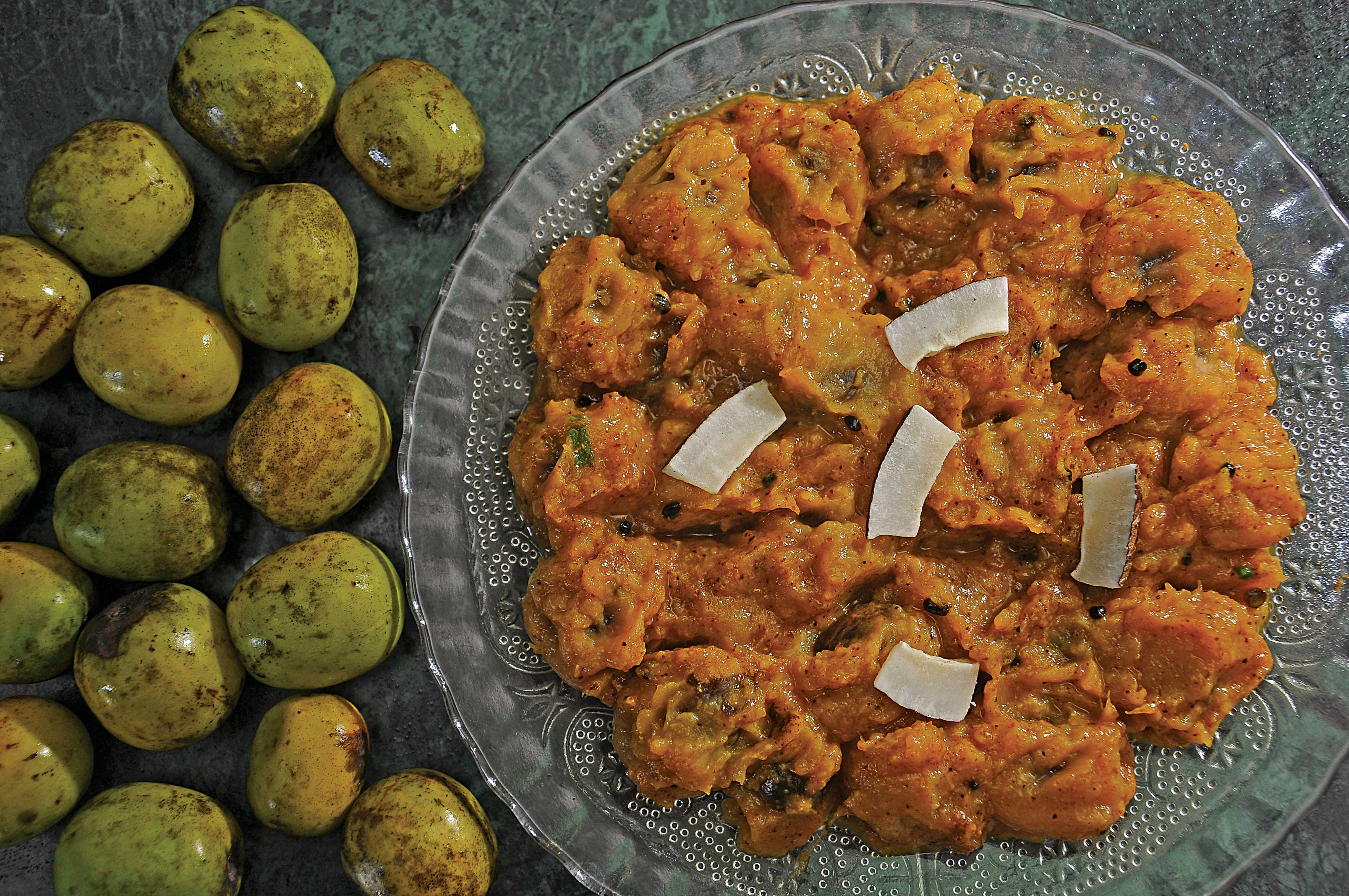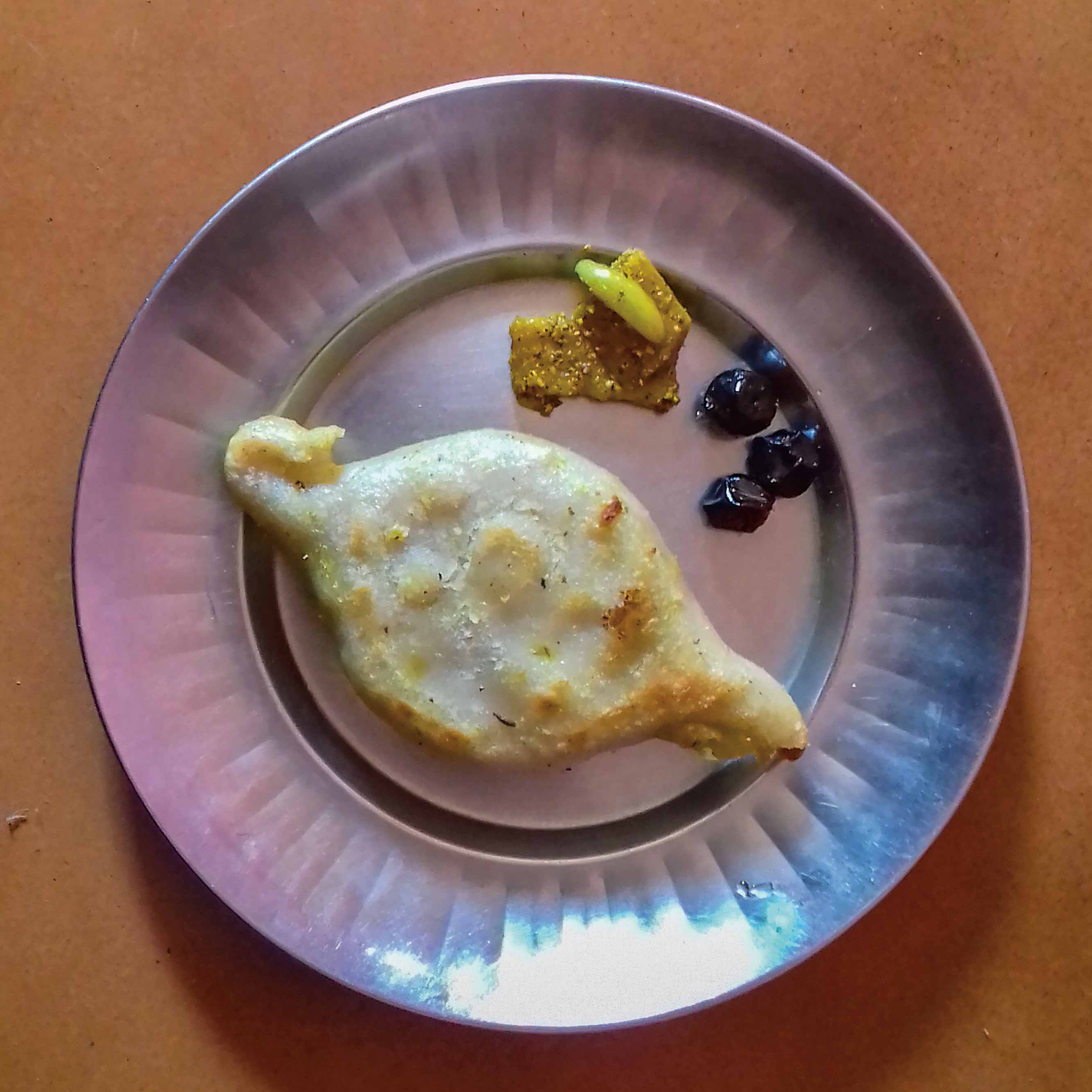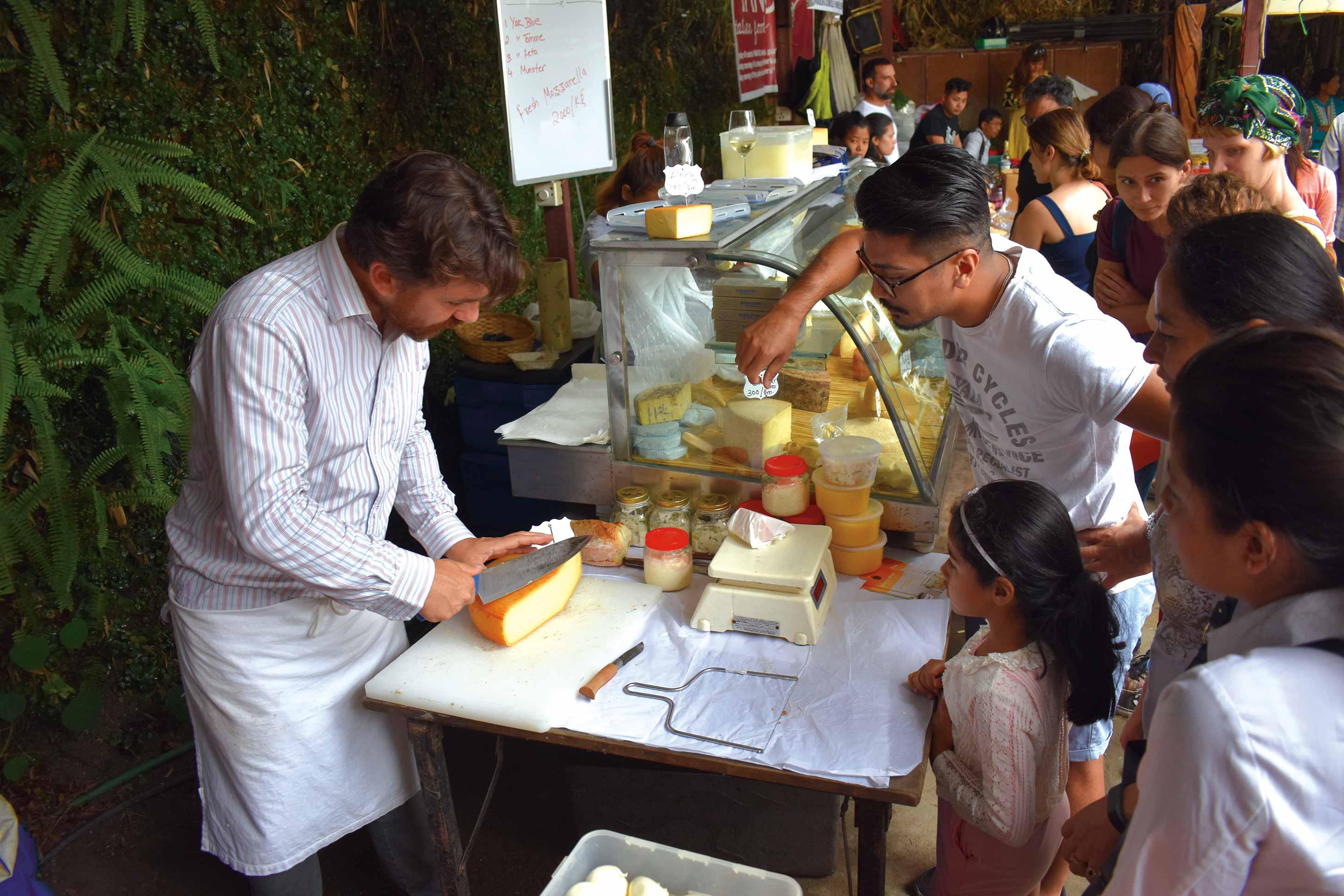Sweets seem to have different meanings to different people. To some, sweets are those excessively sugary foods that you are obliged to have in festivals, which just add unnecessary calories to your diet. Some take it to gain relief from the stresses of the real world. So, it becomes their comfort food; their way of escaping the harsh reality, even though momentarily. For some, sweets are those tiny expensive items that one is better off not consuming, if one is determined to keep a healthy savings account. Some are attracted to them like moths to a flame. Sweets turn into a lifelong obsession, developing into an insatiable appetite for these delights. Not to have them regularly is unthinkable and unbearable, leaving you inconsolably miserable.
Nepalis have ingeniously produced an array of original sweets, unique to our own culinary tradition. Almost every alley of Kathmandu boasts of a sweet shop, where master sweet-makers are at work. Such shops are a sweet tooth’s paradise. Even with a variety of chocolate and pastries flooding our market, these sweets have retained their appeal. They have been our way of celebration, kneaded into the very fabric of our social life. Regrettably, with diabetes rising among the elderly, sweets are beginning to earn a nefarious reputation. But, old or young, the temptation is hard to resist, and they usually do manage to sneakily lay their hands on these forbidden fruits. So, let’s have a look at all these sweets that have long enchanted Nepalese taste-buds.
Pustakari
Often considered the Nepalese version of chocolate, pustakari has been the absolute favorite of many kids. Its batter is made up of milk, sugar, ghee, and khuwa. As you keep it in your mouth, it gradually disintegrates, revealing its distinct taste, or you can simply chew it. It is dark brown in color and is cut into smaller, almost rectangular pieces. It is more like a candy. However, it is not extremely sweet. The ghee curbs the sweetness and gives it a rich taste. It is easy to make at home if you or your kids develop a liking for it.
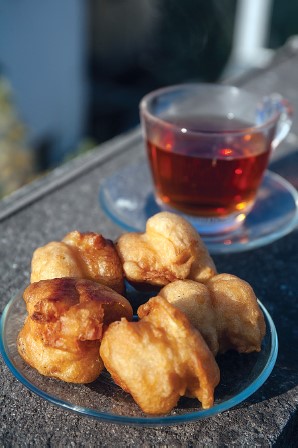 Gulmari
Gulmari
Its batter in thin strands are fried to make gulmari. The batter is made from rich flour, black lentil, and ghee. Brown in color, it is even glazed with sugar as it is dipped in chasni, sugar syrup. It is in many ways similar to lakhamari. The only difference is its size. You can fit many into your palm and eat them like peanuts. Although it is not as famous as lakhamari, it has some die-hard consumers who consider it even better than the latter. If you have not tried one yet, it is definitely worth a taste.
Balbara
Balbara is sweet in a unique way. It is not effusively sweet, but it is not very subtle, either. The best balbaras are just the right amount of sweet. It is like perfection in your mouth. It is round and brittle. It is one of the finest sweets invented by the Nepalis, which has succeeded in stealing the hearts of many locals and foreigners alike for generations. It is usually consumed during religious rituals. The best way to have it is at breakfast with a glass of lemon tea. It will keep your spirits up the entire day.
Aaitha
Aaitha is big chunky brown U-shaped sweet often glazed with sugar. It is heavy and will definitely satiate your appetite. It is similar to lakhamari, but it has a different shape and is bulkier. We can say it’s a different version of lakhamari. Especially in the month of Magh (which is winter), it is often taken as naibedhya (prasad) while listening to the Swasthani Bratta Katha. It brings a family or community together, as everyone gathers around to listen to the sacred story (the story of the Hindu version of the genesis and fasting as the way to get your wishes fulfilled) and sharing aaitha or any other naibedhya promotes mutual affection.
Gutpak
Made with the batter of honey, nuts, ghee, and dried fruits, it is distinct among sweets. Its thick, rich taste is wholesome and keeps you relishing every moment of it in your mouth. It is somewhat similar to chocolate, but instead of cocoa, it has chaku (brown liquid made up of sugarcane juice) and other local ingredients. It is even known to have health benefits, and some consume it regularly during pregnancy. In Kathmandu, gutpak of Corner Taja Gutpak Bhandar in Newroad is quite popular. They have their own secret recipe that has propelled it into astounding fame and fortune.
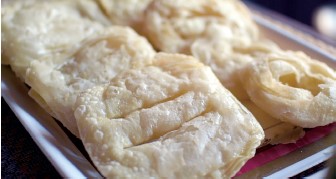 Phini
Phini
Phini is sweet, thin crispy bread of different shapes and colors fried in oil or ghee. It is mostly used in pujas and rituals as offerings to gods and goddesses. It is light and a delight that gradually melts away in your mouth after you take a bite. It is perfect if you want something sweet to liven up your mood, yet not too heavy. Voila! It can become your comfort food without having to worry too much about putting on excessive weight. Some phini that are shaped like a flower or have different layers of different colors are a treat to the eyes, as well.
Roth
Roth is a traditional cookies or biscuit made from plain flour, milk, and sugar. Cardamom and ghee are added to enhance the flavor. It usually comes in diamond shape, but the shape can differ according to the region. It is coarse and heavy. It has less amount of sugar than most sweets. This is what makes it unusual. So, it is perfect for you if you have sugar-related ailments, which is much common nowadays. You must have had so many chocolate chip cookies, why not try this one for a change? It will surely redefine your notion of sweets.
Yomari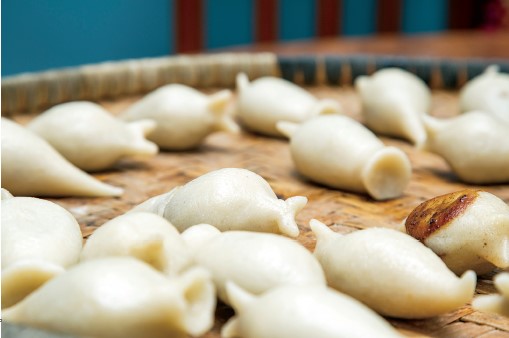
Yomari, a local Newari sweet, is so well-liked it has a whole festival named after it. In Newari, ‘Yau’ means liked and ‘mari’ means bread or sweets. A dough made out of rice flour is made into the shape of a fish and is filled with chaku. It is rich in carbohydrates and is traditionally consumed to generate enough energy to labor in the fields during harvest. Most people like how, with a bite, chaku comes oozing out of it. Sometimes, sesame seeds are also added to the chaku to provide extra flavor. However, yomari can be made with other fillings such as khuwa.
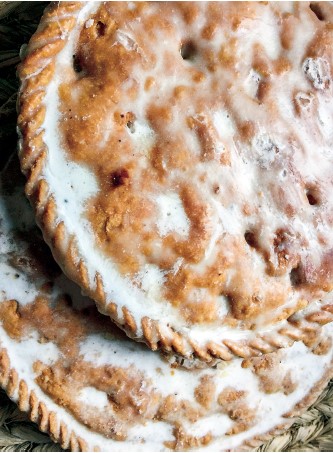 Lakhamari
Lakhamari
With patterns of concentric and intersecting circles, this sweet often comes glazed in sugar. Apart from the fascinating patterns that are, in a way, an art form in its own right, it is an absolute treat to your tongue. It comes in many sizes, too; from small enough to fit in your palm to large enough to cover a whole tray. There is a tradition of sending lakhamari as a symbol of good luck in nuptial ceremonies in some communities. The larger lakhamaris are a family affair; to be shared and eaten with those close to you. Having these larger lakhamaris alone is frowned upon and deemed inappropriate. Sharing is supposed to rekindle the intimacy with your loved ones.
Barfi
Barfi is a diamond-shaped sweet made up of dense milk. There are varieties of barfis available. The most famous ones are kaju barfi, khuwa barfi, besan barfi, and pista barfi. Kaaju barfi, which happens to be relatively expensive, has become a big hit with Kathmanduites. Serving it as a part of dessert at parties has come to be seen as a status symbol. An ancient sweet shop called Shree Ghanashyam Mithai Bhandar in Momarugalli, Mangalbazaar, is famous for its khuwa barfi. It is supposed to be the best in Nepal. Once you taste it, you will find it difficult not to lick your fingers clean.
Peda
Pedas are a delicacy here in Nepal. Along with laddu, these small, round concaved sweets are known to be the favorite of mythical Lord Ganesha. Thus, a long history of this sweet can be inferred from this fact alone. It is offered to the deity while worshipping him, and also distributed as prasad. It is made up of khuwa, or even simply with flour. It is usually garnished with pistachio, saffron, and/or cardamom. Peda made by Pawan Misthan Bhandar in Bhairahawa is declared by some to be of the finest quality in Nepal. Their pedas’ rich, savory taste is bliss in one’s mouth.
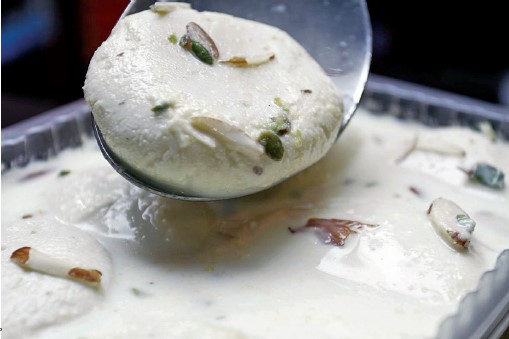 Dudhbari
Dudhbari
Dudhbari consists of spongy edible balls dipped into thick, sweetened milk. It is made from milk, sugar, vinegar, ground cardamom, pistachios, and almond. It is the epitome of what can be made from milk and sugar. Many go as far as to say that they taste heavenly. It is similar to rashbari, but with slightly different taste. Rashbari is comparatively coarse, while dudhbari is soft and is richer in taste. It is one of the most expensive sweets in the Nepalese market, with each piece costing even up to one hundred rupees. Having dudhbari from Rameshwor Sweets and Snacks in New Road is always memorable to my gustatory senses. They have been very consistent with the quality of their dudhbari.
Selroti
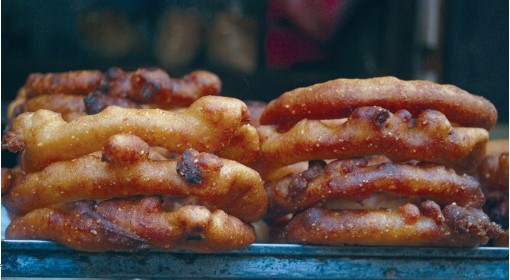
The circular selroti pervades Nepalese sweet shops. It has become almost a staple, as many people regularly have it for breakfast; almost like donuts. It is heavy and satisfies your appetite. The scent of selroti being fried in ghee or oil drifts across the streets during festivals. Making selroti is also a community affair, as families come together to make them and distribute among neighbors or family members once they are prepared. Exchanging selroti bonds distant relatives, and are a way of expressing their good wishes. Nowadays, supermarkets are also selling ready-made selroti, which only needs to be microwaved.
Malpuwa
Malpuwa is type of round bread, but only smaller and more delicious. Made up of flour and sparse quantity of aniseed fried in ghee, it is usually eaten with jeri, swari, and halwa, giving birth to the famous trio of jerri-swari-malpuwa. It is harder at the edges and softer as you go towards the middle. The middle part is comparatively bulkier and uniquely tasty. Malpuwa made by Shree Kumari Mithai Pasal in Chhetrapati is top-notch. They have been producing malpuwa along with other sweets for three generations now. So, you can rest assured that you’re getting high value for your money. Mind you, this is not just a sweet. This is love.




